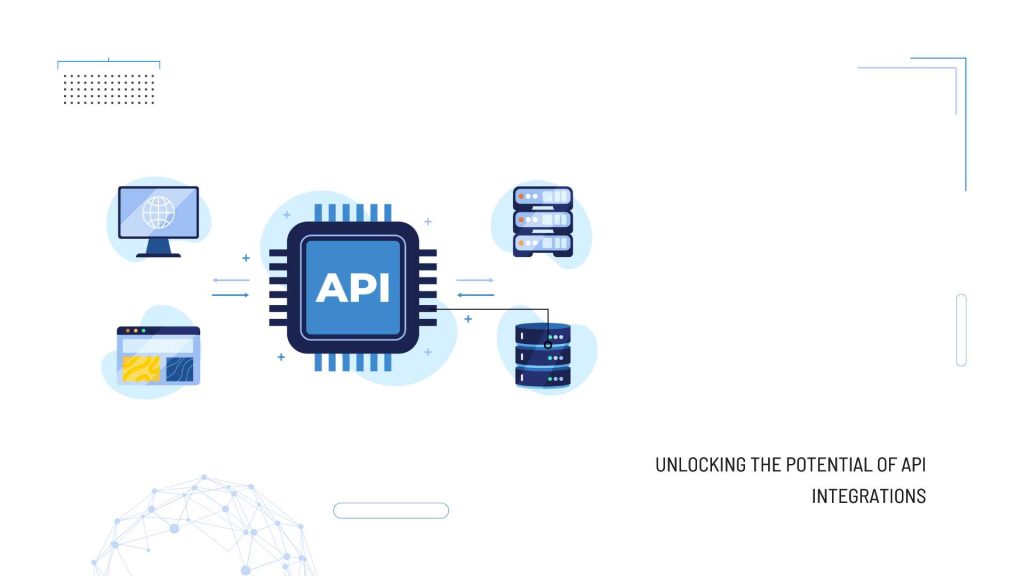API integration is the method of connecting two or more software applications through APIs, facilitating the exchange of data and functionality without the necessity for intricate and costly custom integrations. APIs serve as a secure and standardized means for systems to interact. Enabling seamless data exchange and communication between different applications.
APIs define the methods and protocols through which different applications can communicate and exchange data. APIs effectively serve as intermediaries between two applications, enabling seamless collaboration between them.
How does API Integration Work?
API integration works by enabling different applications to interact with each other, allowing them to share and transfer data and functionality. APIs serve as intermediaries, providing a standardized way for applications to communicate by sending requests and receiving responses.
API integration involves four key components:
Endpoint: an endpoint is a unique URL that defines the location of a specific resource that the API is designed to access.
Request: A request is a message dispatched by an application seeking to reach an API endpoint.
Response: a response is the message sent from an API endpoint back to an application that made the request.
Protocol: A protocol consists of established guidelines governing the exchange of data between applications.
In API integration, the application that receives the request sends back a response based on the data provided by the requesting application. The API handles the data transfer between the two applications, ensuring that the data is delivered securely and accurately.
API Integration Use Cases By Industries
E-commerce: API integrations enable online stores to sync inventory, process payments, and manage orders across multiple platforms.
Healthcare: Integrating APIs allows healthcare providers to securely share patient data, automate appointment scheduling, and connect with external healthcare systems.
Financial services: API integrations enable banks and financial institutions to interface with payment gateways, automate transactions, and access real-time market data.
Education: API integrations allow for seamless data exchange between learning management systems, grading platforms, and student information systems.
Benefits of API Integrations When Connecting Systems Together
API integrations offer several benefits when connecting systems together. These include:
Streamlined data exchange: APIs enable seamless and real-time data exchange between systems, ensuring accuracy and efficiency.
Enhanced functionality: By integrating APIs, systems can leverage the functionality of other applications. Extending their own capabilities without reinventing the wheel.
Automation and efficiency: API integrations automate processes, reducing manual effort and increasing overall efficiency.
Improved accuracy and reliability: With API integrations, there is less room for manual errors. Leading to improved accuracy and reliability of data transfers.
How to Build API Integration?
Building API integrations involves a few key steps:
Understand the requirements: Identify the systems and functionalities you want to integrate and determine the goals and expectations of the integration.
Choose the right API: Select the APIs that align with your integration requirements and ensure they have the necessary documentation and support.
Develop the integration: Use programming languages or integration platforms to develop the integration logic and define how the systems will interact.
Test and deploy: Thoroughly test the integration to ensure its functionality, reliability, and security. Once tested, deploy the integration to production systems.
“It is important to understand that creating API integrations may involve the expertise of developers or integration specialists. Depending on the complexity of the integration and the tools used.”
Conclusion:
The Acumatica Web Services API empowers developers to integrate Acumatica Cloud ERP with other systems and applications. It allows seamless access to the data managed by Acumatica ERP and its business functionality through a SOAP interface. API provides capabilities for integrating with external data sources and third-party systems, supporting concurrent API requests and defining web services API users.

Vijay comes with a vast experience in ERP and enterprise solutions space with about 20 years of experience in various packaged application like Acumatica, SAP, Orion, Salesforce.com, SugarCRM and, SalesLogix.

